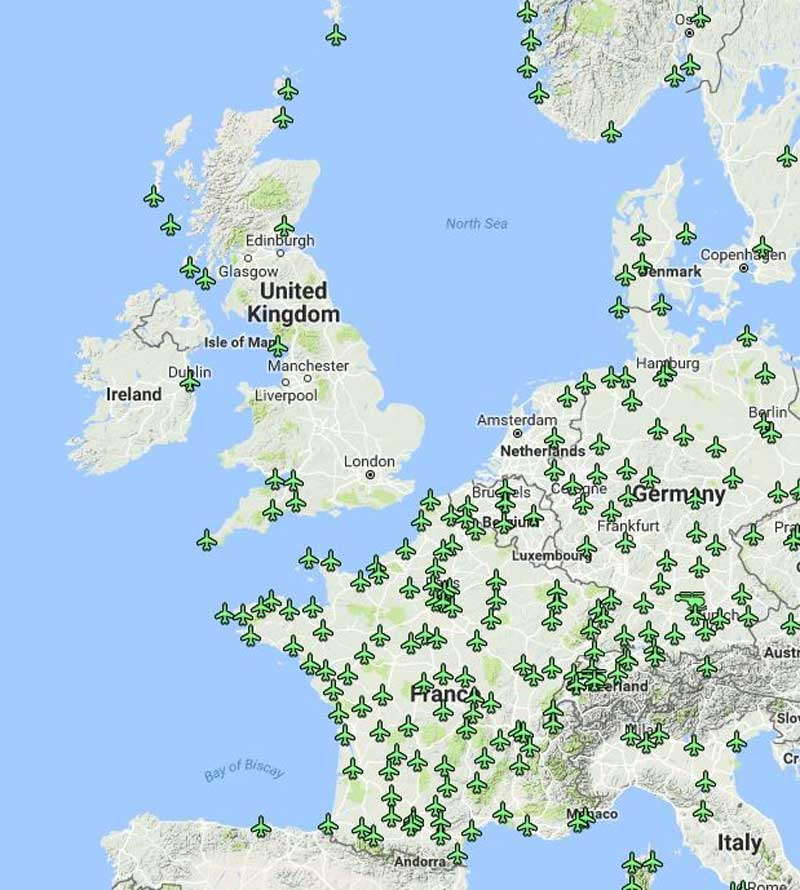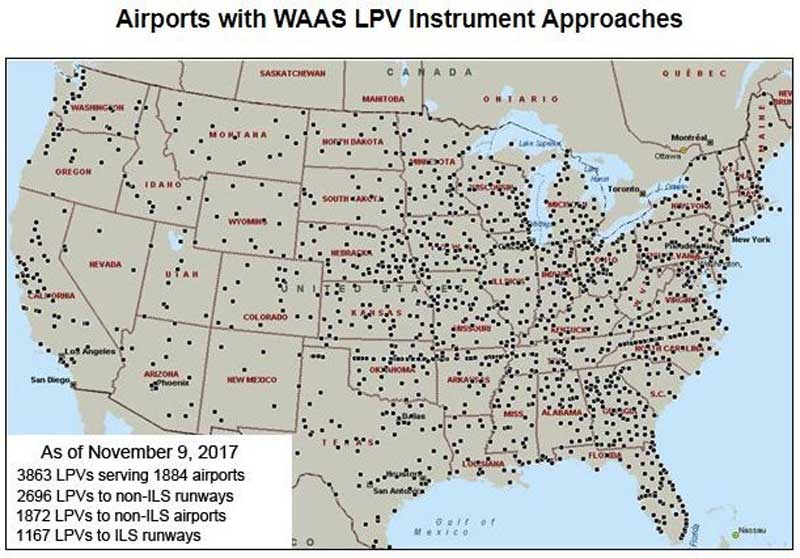The CAA’s failure to approve GPS approaches at aerodromes across the UK “hasn’t been our finest hour”, according to no less than Mark Swan, CAA Director of Airspace Policy.
The admission came after the All-Party Parliamentary Group on General Aviation (APPG) pressed the CAA to speed up the roll-out of GPS approaches.
In a meeting in Parliament with Mark Swan and Jon Round, Head of Airspace, ATM and Aerodromes, Grant Shapps MP of the APPG, expressed serious concern that the UK is lagging a long way behind countries such as France, Germany and the USA, when it comes to embracing technology which could improve flight safety.
GPS approaches – also known as GNSS (Global Navigation Satellite System) – to smaller aerodromes will allow for greater accuracy and safety, particularly in adverse weather conditions where visibility may be poor.

GPS approaches are far more common across Europe than in the UK – and the CAA admits it’s at fault.

The USA has even more GPS approaches, making flying into airfields big and small safer in poor weather.
Grant Shapps said, “It’s four years since ministers asked the Civil Aviation Authority to expand GPS technology to enhance flight safety at smaller aerodromes. That request was made to the Chief Exec of the CAA and it beggars belief that so little has happened in the intervening time.
“Whilst I acknowledge that there are complexities in introducing approaches in otherwise non-regulated airspace, it is now apparent that the regulator simply hasn’t put the time or effort into delivering GPS approaches. As a direct consequence we now lag years behind more proactive countries on this issue.
“If the CAA are not able to respond to the needs of General Aviation, even after asked to do so by ministers, then Parliament must investigate whether a better approval process can be implemented.
“There are now 156 parliamentarians who take a keen interest in what the CAA is doing and the APPG may need to undertake an Inquiry if we don’t start to see real progress, quickly.
“In many ways, the GA Unit of the CAA has led the world in recent years, but this seems to be a blind spot and it cannot be right that numerous airfields have shelled out tens-of-thousands of pounds to try to navigate a GPS application process that the CAA now acknowledge was not fit for purpose.
“We absolutely accept that this is a complex area and that applicant airfields need to provide further information on the safety case, but delay does not in any way enhance flight safety either.”
Mark Swan, the CAA’s Head of Airspace Policy, said, “We accept that the Civil Aviation Authority has been too slow to process applications for GNSS approaches at aerodromes.
“This is going to speed up, and decisions will be made in the coming months one way or the other.
“We too want to see greater use of technology in the General Aviation sector, and we urge sponsors to provide as much information as possible in their applications, to allay legitimate safety concerns.”
All-Party Parliamentary Group on General Aviation















4 comments
CAA to busy increasing size of controlled airspace.
He was lucky to get a response from the CAA, I usually have to e-mail them 3 months before I visit the UK and then weekly to try and get an answer on flying in the UK
I fly both here and the us and cannot believe how far behind the UK is with gps approaches
My local airfield in the US does not have a tower but has 2 RNAV approaches
The caa seems to be in a bit of a mess. I applied for a conversion to an easa licence on the 27th April and still have not heared from them.
Unfortunately the CAA lost it’s way when JAR and EASA regulations had to be incorporated into it’s system.
In the last 15 years the Authority has gradually become totally inefficient, lost in a mass of paper, much of which is self-generated.
The time has come for ditching the present Authority and a new, slimline regulatory body formed and a new, separate ARB allowed to give the engineers a tight, neat source of information and regulatory guidance.